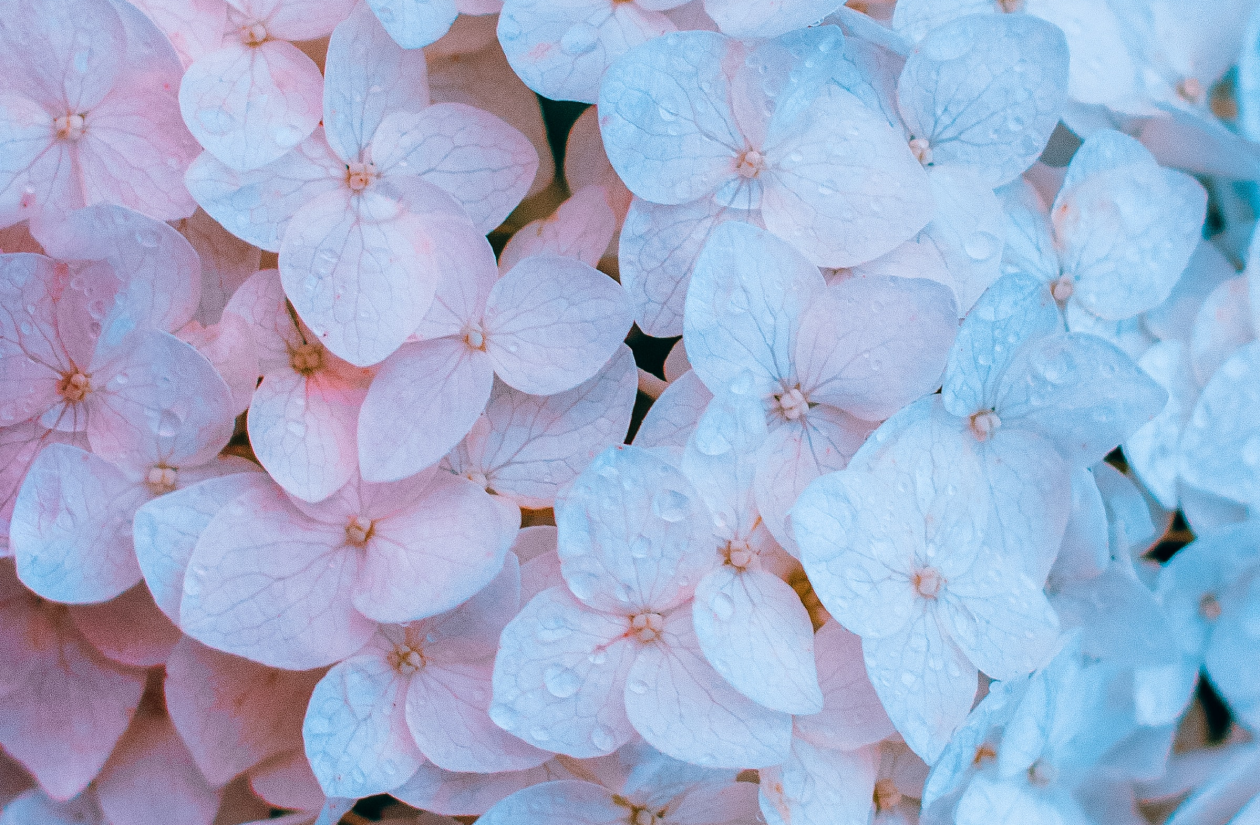Hydrangea
Our Brochures
Contact Us
Social Media


- Soil: Prefer well-drained soils rich in organic matter, with a slightly acidic to neutral pH (5.5-7).
- Climate: Thrive best in temperate climates, being sensitive to extremely high or low temperatures.
- Light: Require partial sun exposure and partial shade, especially during the hottest hours of the day.
- Watering: Require regular watering, keeping the soil moist but not waterlogged.
- Propagation: Can be done through cuttings, root division, or seeds.
Hydragea Varieties
- Hydrangea macrophylla: Includes mophead and lacecap varieties, known for their large flowers.
- Hydrangea paniculata: Known for its conical flowers and tolerance to colder climates.
- Hydrangea arborescens: Includes the popular ‘Annabelle’ variety, with large globular white flowers.
- Hydrangea quercifolia: Noted for its lobed leaves that resemble those of an oak.
Common Uses
- Gardening: Widely used in gardens and landscaping for their attractive and voluminous flowering.
- Cut flower: Used in floral arrangements and bouquets for their large and colorful flowers.
- Special events: Common in events such as weddings, baptisms, etc.
Color Varieties
- Blue: This color can primarily be found in Hydrangea macrophylla, and is encouraged with acidic soils (low pH).
- Pink: Much like the blue ones, pink hues are primarily found in Hydrangea macrophylla and are encouraged by alkaline soils (high pH).
- White: Many species and varieties of hydrangeas produce white flowers, including Hydrangea arborescens ‘Annabelle’ and Hydrangea paniculata.
- Red: Some varieties of Hydrangea macrophylla can produce red flowers, especially with specialized care and optimal soil conditions.
Hydragea
- Purple/Lilac: This color can be achieved in varieties of Hydrangea macrophylla, resulting from a soil pH that is intermediate between that required for blue and pink flowers.
- Green: Some varieties can produce flowers with green hues, often as an intermediate stage in the flower’s color-changing process.
Note: It’s interesting to note that the color of hydrangea flowers can change over time, and gardeners can “manipulate” the flower colors by adjusting the soil pH and providing the right nutrients (like aluminum for blue flowers). This unique feature gives them incredible versatility in landscape and garden design.
Places Where It Is Grown
- Asia: In particular in Japan and China, where they have been cultivated for centuries, hydrangeas are a big part of the regions’ horticulture history.
- North America: Predominantly in the United States, hydrangeas are cultivated largely on the East Coast, though they can be found in gardens across the country, adapting well to various climate zones.
- Europe: In many European countries, including the UK, France, and the Netherlands, hydrangeas are a popular choice for gardens and landscapes, with many nurseries specializing in hydrangea cultivation.
- Oceania: In countries like Australia and New Zealand, hydrangeas are cultivated in regions with suitable climates, adding beauty to both public and private gardens.
- Latin America: In countries with temperate climates, such as parts of Brazil, Argentina, and Colombia, hydrangeas are used to adorn gardens and parks.
Medicinal Uses
- Although not common, some species of hydrangeas have been used in traditional medicine. However, it is essential to note that some parts of the plant can be toxic if consumed in large quantities. It has been used in treatments for:
- Urinary issues: Used in some traditional medicines to treat kidney stones and urinary problems.
- Anti-inflammatory: Has anti-inflammatory properties and has been used to treat conditions such as gout and arthritis.
Note: The use of hydrangeas for medicinal purposes should be done with caution and always under medical supervision.
